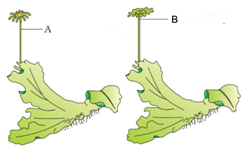Many mammals, especially in natural, wild conditions are:
(1) Continuous breeders
(2) Seasonal breeders
(3) Both continuous and seasonal breeders
(4) Very much disease sensitive
कई स्तनधारी, विशेष रूप से प्राकृतिक, जंगली परिस्थितियों में हैं:
(1) सतत प्रजनक
(2) मौसमी प्रजनक
(3) सतत और मौसमी दोनों प्रजनक
(4) बहुत अधिक रोग संवेदनशील
Which of the following is false about internal fertilization?
I. Male gamete is motile
II. Male gametes are non-motile
III. Male gametes are produced in large number
IV. Male gametes are produced in small number
V. There is a significant reduction in the number of eggs produce
VI. In seeded plants non-motile male gametes are carried to female gamete by pollen tubes
(1) I, III, V, VI
(2) III, IV
(3) II, IV
(4) V, VI
आंतरिक निषेचन के बारे में निम्नलिखित में से कौन सा कथन गलत है?
I. नर युग्मक गतिशील होते है
II. नर युग्मक गैर-गतिशील होते हैं
III. नर युग्मक बड़ी संख्या में उत्पन्न होते हैं
IV. नर युग्मक कम संख्या में उत्पन्न होते हैं
V. अंडों के उत्पादन की संख्या में उल्लेखनीय कमी आई है
VI. बीज वाले पौधों में पराग नलिकाओं द्वारा गैर-गतिशील नर युग्मकों को मादा युग्मक तक ले जाया जाता है
(1) I, III, V, VI
(2) III,IV
(3) II, IV
(4) V, VI
Select the correct sequence from the following:
I. Juvenile phase → Senescent phase → Reproductive phase
II. Juvenile phase → Reproductive phase → Senescent phase
III. Reproductive phase → Juvenile phase → Senescent phase
IV. Vegetative phase → Reproductive phase → Senescent phase
(1) I and II
(2) I and IV
(3) III and IV
(4) II and IV
निम्नलिखित में से सही क्रम चुनिए:
I. किशोर अवस्था → जीर्णमान अवस्था→ जनन अवस्था
II. किशोर अवस्था → जनन अवस्था → जीर्णमान अवस्था
III. जनन अवस्था → किशोर अवस्था → जीर्णमान अवस्था
IV. कायिक अवस्था → जनन अवस्था → जीर्णमान अवस्था
(1) I और II
(२) I और IV
(3) III और IV
(4) II और IV
Which is not a method of vegetative propagation
A.Micro propagation
B.Budding
C.Sowing
D.Layering
जो वानस्पतिक प्रवर्धन की एक विधि नहीं है:
A. सूक्ष्मप्रवर्धन
B. मुकुलन
C. वपन
D. परतन
Identify A and B
A. A-Archegoniphore, B-Anthediophore
B. A- Anthediophore, B- Archegoniphore
C. A-Anthridium, B-Style
D. A-Ovary, B-Blastopore
A और B को पहचानें:
A. A-स्त्रीधानीधर, B-पुंधानीधर
B. A- पुंधानीधर, B- स्त्रीधानीधर
C. A-पुंधानी, B-वर्तिका
D. A-अंडाशय, B-कोरकरंध्र
Binary fission is a type of
A.Nuclear fragmentation
B.Vegetative propagation
C.Sexual reproduction
D.Asexual reproduction
द्वि-खंडन एक प्रकार का है:
A. केंद्रकीय खंडन
B. वानस्पतिक प्रवर्धन
C. लैंगिक प्रजनन
D. अलैंगिक प्रजनन
Hermaphrodite animal is
A.Leech
B.Spider
C.Honey bee
D.Ascaris
उभयलिंगी प्राणी है:
A. जोंक
B. मकड़ी
C. मधुमक्खी
D. एस्केरिस
__________ is formed just after fertilization.
A.Morula
B.Blastula
C.Zygote
D.Foetus
__________ निषेचन के ठीक बाद बनता है।
A. मोरुला
B.ब्लास्टुला
C. युग्मनज
D. भ्रूण
Small aquatic animals produce large number of gametes in surrounding water
A. to enhance the chances of syngamy
B. to produce large number of offspring
C. offspring are extremely vulnerable to predators threatening their survival
D. Both A and C
छोटे जलीय जंतु आसपास के जल में बड़ी संख्या में युग्मक उत्पन्न करते हैं:
A. युग्मक संलयन की संभावना बढ़ाने के लिए
B. बड़ी संख्या में संतति उत्पन्न करने के लिए
C. संतति की उत्तरजीविता काफी जोखिम पूर्ण होती है
D. A और C दोनों
Parthenogenesis is the development of an organism directly from:
A.Female gametes
B.Vegetative cells
C.Fertilized ovum
D.None
आनिषेकजनन, जीव का प्रत्यक्ष विकास है:
A. मादा युग्मक
B. वानस्पतिक कोशिकाओं
C. निषेचित डिंब
D. कुछ भी नहीं







